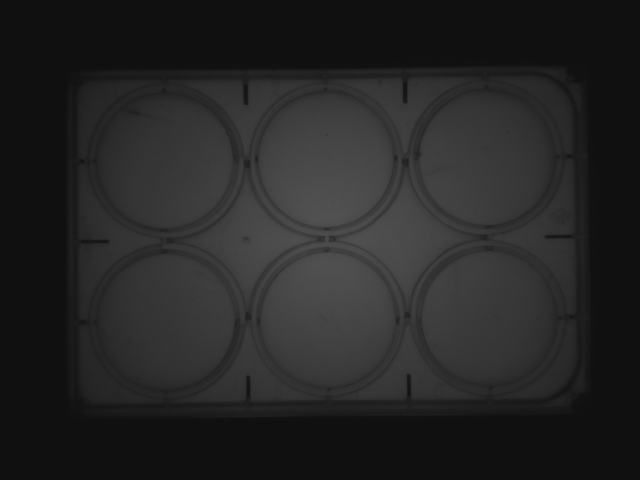These tracking settings are used for software prior to May 2022.
Contact us for the latest software update. NOTE: all Zantiks software updates are back compatible - any existing scripts (including the commands/functions below) will work on later software versions.
Before starting an experiment in a Zantiks unit, ensure the correct tracking settings for your model organism are set (i.e., included in the script). The tracking setting are comprised of six to seven SET functions located at the beginning of the script, which tell the software how to find and track the organism in the arena. Standard tracking settings for various the model organisms are shown below. These values have been tested and are reliable in tracking most animals. However, the values may need to be adjusted for your specific animals.
Tracking settings in the AD unit
Adult zebrafish:
SET(DETECTOR_THRESHOLD,2) SET(SEARCH_DISTANCE,50) SET(SEARCH_STEP,7) SET(FILTER_RADIUS,15)
Adult killifish:
SET(DETECTOR_THRESHOLD,2) SET(SEARCH_DISTANCE,64) SET(SEARCH_STEP,8) SET(FILTER_RADIUS,25)
Tracking settings in the MWP units
Larval zebrafish:
SET(TILE_SIZE,5) SET(DETECTOR_THRESHOLD,6) SET(SEARCH_DISTANCE,10) SET(SEARCH_STEP,3) SET(FILTER_RADIUS,3)
Adult Drosophila:
SET(TILE_SIZE,5) SET(DETECTOR_THRESHOLD,10) SET(SEARCH_DISTANCE,9) SET(SEARCH_STEP,3) SET(FILTER_RADIUS,6)
Daphnia:
SET(TILE_SIZE,5) SET(DETECTOR_THRESHOLD,7) SET(SEARCH_DISTANCE,7) SET(SEARCH_STEP,2) SET(FILTER_RADIUS,2)
Tracking settings in the LT unit
Adult zebrafish:
SET(DETECTOR_THRESHOLD,2) SET(SEARCH_DISTANCE,36) SET(SEARCH_STEP,6) SET(FILTER_RADIUS,12)
Notes on the additional SET functions
SET(TILE_SIZE,#)
Zanscript includes a default TILE_SIZE of 10, the TILE_SIZE for an average sized zebrafish, which is why it is not written with the adult zebrafish settings above. The software includes it automatically. Larger or smaller animals will need this function reset in the script. Smaller animals, such as larval zebrafish and Drosophila, require a smaller TILE_SIZE (i.e., 5) and vice versa.
SET(SEARCH_DISTANCE,#) SET(SEARCH_STEP,#)
SEARCH_DISTANCE and SEARCH_STEP are the area size the software uses to look for the difference between the live view and the reference image within the distance/size set. The SEARCH_STEP should be the square root of the SEARCH_DISTANCE. These two SET functions above should not need altering from the values for the standard sized organisms above.
SET(FILTER_RADIUS,#)
The FILTER_RADIUS is the approximate radius of the object in pixels. If the value is too low, the crosshair jumps around the model organism or may detect 'noise' and jump around the arena. If the parameter is too high, tracking may be intermittent and stationary animals may not be found.
Tips to remember
- Before starting any experiment with animals that you have not tracked before, check that the correct values are in the SET functions by running a test script to check your tracking.
- Your animals need to have moved during the autoreference period to provide the best reference image - you can update the value (in seconds) in the code, e.g.:
SET(AUTOREF_TIMEOUT,30)
- If the crosshairs are jumping around your animal, try reducing the value of the FILTER_RADIUS and/or reduce the value of the DETECTOR_THRESHOLD.
- If the crosshair stops tracking the animals sometimes, try decreasing the DETECTOR_THRESHOLD and/or reduce the value of the FILTER_RADIUS.
- If you have an issue with the tracking of just one/few animals, there may be a problem with the reference image (perhaps the animals didn't move during the autoreference period):
- Go to the Assets directory and check the autoref.bmp - the Assets directory only contains one autoref.bmp - the most recent one taken.
- Try increasing the AUTOREF_TIMEOUT period to increase the likelihood of the animal moving.
- In the reference image below you can see one animal did not move (top left well), and consequently the tracking in this arena disappeared every time the animal crossed this dark part of the arena.

Tracking video examples
The following videos were captured when testing SET function values for mysis shrimps in the MWP unit. We started with the standard SET values for larval zebrafish and after individually tweaking the FILTER_RADIUS and DETECTOR_THRESHOLD we found the following SET values tracked the animals best:
SET(TILE_SIZE,5) SET(DETECTOR_THRESHOLD,8) SET(SEARCH_DISTANCE,10) SET(SEARCH_STEP,3) SET(FILTER_RADIUS,6)
The tracking also worked well with a lower DETECTOR_THRESHOLD (down to a value of 3).
The tracking crosshair is jumping on the animals in this video.
The FILTER_RADIUS in this video was set at 1. All the other SET function values were as above.
> The FILTER_RADIUS needs to be increased.
If the FILTER_RADIUS is set too high, not all the animals will be tracked, as demonstrated in this video:
The FILTER_RADIUS is set at 20. All the other SET function values were as above.
> The FILTER_RADIUS needs to be less.
The tracking 'crosshair' loses the animals sometimes in this video.
The DETECTOR_THRESHOLD was set to 16, all the other SET function values were as above.
> The DETECTOR_THRESHOLD needs to be lower (set at 8 the tracking was reliable).
Reliable tracking is demonstrated in this video.
The SET function values are as detailed above.



